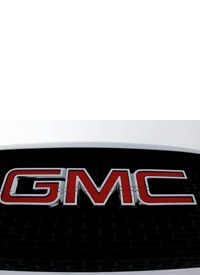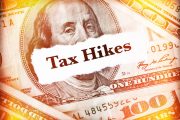
Steven Rattner, former counselor to Treasury Secretary Timothy Geithner, celebrated in Huffington Post, “In the end, it was a blow out!” With the old General Motors successfully selling shares in its new General Motors at $33 per share, taxpayers will allegedly be getting back part of the $50 billion in bailout money used to rescue the company 17 months ago.
As Rattner exulted:
The mother of all initial public offerings — that of the refreshed, revitalized and revamped General Motors — went off better than almost anyone expected….
Note the key lessons of the GM adventure: First, the availability of $82 billion from the now reviled Troubled Assets Relief Program was essential. Our ever hapless Congress would never have acted in [such] a timely way. The existence of TARP saved our auto industry, our banking system and derivatively, our entire economy.
The U.S. Treasury sold nearly 500 million of its common and preferred shares in the company, returning about $23 billion back to the government, and bringing its interest in the company down from 61 percent to 33 percent. The United Auto Workers healthcare trust, which owned another 20 percent of the company, also sold some of its interest in the company, reducing its stake to just over 13 percent.
President Obama also expressed his delight: “General Motors’ initial public offering marks a major milestone in the turnaround of not just an iconic company but the entire American auto industry. Through [this] IPO, the government will cut its stake in GM by nearly half, continuing our disciplined commitment to exit this investment while protecting the American taxpayer.” Treasury Secretary Geithner added, “It is now widely recognized that the taxpayers’ investment not only helped save jobs during the worst economic crisis in a generation but also gave the auto industry a solid foundation on which to build.”
The Center for Automotive Research announced that, with the bailout of the automotive industry, the government avoided a loss of $28 billion and saved nearly 1½ million jobs. Kristin Dziczek, director of the research group, said, “The loss would have been caused by increased public welfare payments and lost tax revenues from workers had the government not provided [that] $82 billion of assistance to the industry.” She added, “You could argue that because the auto industry is one of the most productive and integrated industries, putting the money there was a better place to put it than job creation in any other sector.”
Joann Muller wrote in Forbes that part of the reason for the success of the offering of shares in the new company was because it has a much more competitive cost structure and a “clean balance sheet,” and is building better cars. Although it has shed several of its brands, now offering only Chevrolet, Buick, Cadillac, and GMC models, it has posted three consecutive profitable quarters and may just show a profit for the full year, the first time since 2004.
For the skeptics, however, much was left unreported. In order for the taxpayer to come out even on the bailout, the share price of GM stock would have to rise to more than $50. This admittedly is going to be a long row to hoe, especially in an economy mired in the Great Recession. And the quality of GM’s cars is still well behind those of Ford and Toyota. And while GM is showing profits in the United States and in some foreign countries, they are still losing $2 billion annually in Europe.
And let’s not forget about the original owners of the old General Motors, whose stock is essentially worthless, and whose bonds took steep discounts from face value during the bankruptcy. And even to use the word bankruptcy isn’t accurate; takeover is more precise. At no time did the real owners of the company participate in the restructuring which, as will be recalled, transferred 20 percent of the company to the UAW at essentially no cost to them.
Other concerns haven’t been addressed, either. Where is that money from the offering going? Is it going to reduce the federal deficit? Not a chance. The Fed has just stepped to the plate to keep the government going for another six months with its additional massive ongoing inevitable and eternal bailout called QE2. And who is running the company? Management appears at the moment to be doing an excellent job if all reports are to be believed. But the federal government still owns a third of the company and its union owns one-eighth. What is likely to happen during union negotiations? Would that union ownership ever be used for blackmail purposes? Heaven forbid it! And would the kleptomaniac government planners ever totally leave GM alone? Not likely. And just who arranged for the IPO? Would that be the insider bankers that profited from the economic meltdown? Would that be Morgan Stanley, JP MorganChase, Bank of America, Citigroup? Of course it would. Their "commission?" The Times reported that their fee would be just 0.75 percent, "low by bankers’ standards." That’s $172 million.
Finally, what is firmly cemented in place now is the expectation that the U.S. taxpayer will always be “on the hook” during future “recessions,” difficulties, and financial crises.
In sum, then, things haven’t really changed all that much. The company isn’t free to compete as well as it could, it will suffer from tarnish on its reputation for years to come, it will still operate under heavy government and union influence, and the taxpayer, in light of the precedent set by the bailouts, will never get out whole. And the bankers….
Photo: AP Images



